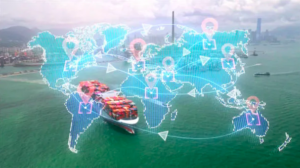This article is an abstract of a working paper by Hari Seshasayee published by Observatorio América Latina Asia Pacífico in September 2020: « The Ebb and Flow of India-Latin America Ties: Exploring Opportunities with Colombia ». Thank you to the Observatory for their kind authorisation to re-publish.
When studying extra-hemispherical actors in Latin America, the usual suspects tend to be global powers and traditional partners of the region, such as the US, China, Russia, European countries like Spain or Germany, and occasionally Japan and South Korea; India rarely figures in this list, but this paper is evidence that perhaps more data and analysis is required of India-Latin America ties. India’s neighbour and arguably the bigger Asian giant, China, is now a proactive and undeniable partner for Latin America, and thus appears more often in commentary about the region. After all, China is the largest trade partner for many countries in the region, including Brazil, Peru and Chile, and is a major investor and lender for others like Venezuela, Bolivia and Argentina. This brings up some valid and important questions: How does India’s relationship with Latin America compare and contrast with China’s? Is there any competition between the two Asian giants in the region?
The presence of India and China in Latin America can be viewed from three broad lenses:
- Political: China formulated an exhaustive policy towards Latin America early into the 21st century. In fact, the Chinese state published two white papers detailing their Latin America policy in 2008 and 2016. The policy paper in 2016 notes that “relations have entered a new stage of comprehensive cooperation. The two sides have witnessed frequent high-level exchanges and political dialogues, all- round and rapid development in trade, investment, finance and other areas, and increasingly close cultural and people-to-people exchanges.” These policies have been supported by strong ideological and political linkages between China and Latin America, resulting in more than 31 visits by the Chinese president and premier between 2001 and 2016. On the other hand, the Indian government has no official Latin America policy, unlike its ‘Look East’ policy prioritizing East Asia and the Africa-India Framework for Cooperation. This has had a palpable impact on high-level visits: in the last 50 years, India’s prime minister has made only three official bilateral visits to the Latin American region, in 2006, 2010 and 2014, all to Brazil. It would be to the benefit of the government of India to articulate a clear and ambitious Latin America policy, and also provide political and diplomatic support to expand its ties with the region, even if it is focused chiefly on economic diplomacy.
- Commercial: China and India are in two different leagues in their commercial relationship with Latin America. China’s trade with the region stood at US$319 billion in 2019, and Chinese President Xi Jinping set a target of US$500 billion for 2025. Chinese investments in Latin America since 2005 amount more than US$ 130 billion, and Chinese loans to the region total roughly US$ 140 billion. India’s commercial linkages are far smaller in scale: trade peaked in 2014 at US$ 49 billion, and investments currently stand at US$16 billion. However, India packs a bigger punch in certain aspects. Latin American companies have invested US$ 2 billion in India, which is more than their US$ 1.5 billion in China. India has also been a consistent and sizeable importer of vegetable oils from Latin America; since 2014, India has imported more soybean and sunflower oil from the region than China. Perhaps even more important is the fact that India’s pharmaceutical companies have an edge over China in the Latin American region: throughout the 21st century, India has exported more finished pharmaceutical products to Latin America than China. Finally, India and China are major importers of Latin America’s energy products, but it would seem that there is enough to go around, given that Latin America is home to about one-fifth of the world’s proven oil reserves. In 2012-14, Latin America exported more oil to India than it did to China, though this equation has changed 2015 onwards; additionally, India is more dependent on Latin America for oil than China is, since the region accounts for up to 20% of India’s total oil imports, but only 10% of China’s. In terms of investments, even though China remains leagues ahead in terms of total foreign investment stock, the nature of investments from both sides remain vastly different, and thus also have diverse impacts in Latin America. The vast majority of India’s investment in the region comes from the private sector, while China’s comes from both state-run enterprises and private companies (aptly supported by the State). The Indian investment has no political strings attached, while China’s is far from innocuous. Moreover, Indian companies invest heavily in Latin America’s manufacturing and value-added sectors, while the vast majority of Chinese investments remain in infrastructure, energy and mining. Even though China’s investment profile in the region has changed over the past few years, tilting more towards services, oil, mining and transport still make up roughly 60% of total Chinese investments in the region. Still, given the rather positive experience so far of Mansarovar Colombia, the joint venture between India’s and China’s state oil companies in Colombia, there is also scope for joint India-China collaboration in Latin America.
- Cultural and psychological: India maintains a fairly benevolent image in Latin America, remembered more as a historical and civilizational country that has more recently become something of a modern technological powerhouse; to most Latin Americans, the name India brings echoes of historical figures like Mahatma Gandhi, an icon of peace that resonates throughout the region, and Rabindranath Tagore, whose visit to Argentina and friendship with Victoria Ocampo is remembered fondly even today. On the other hand, China has a completely different image in Latin America: one of economic superiority and a growing global power that could possibly even displace the US in its own backyard. This brings China and Chinese companies under more relative scrutiny when operating in Latin America. From a social perspective, India is more palatable to most countries in the region as a comparable democracy with a broad federal structure, while China remains a one-party state with a strong central authority. However, in some ways China has a cultural edge, with over 3 million Chinese diaspora in the Latin American region, while India has a scant 30,000 people living in the region.
It would not be hasty to conclude that despite China’s visibly deeper linkages with Latin America, there remain some areas, such as petroleum, pharmaceuticals, investments in manufacturing and services, where India can and occasionally does go head-to-head with China in the region. India can also use its soft power to its advantage in Latin America but has yet to do so in an intentional or instrumental way. It would also be to the benefit of New Delhi to articulate and prioritize its foreign policy with the region.
Still, some challenges remain: the lack of Free Trade Agreements (FTA) between India and Latin America puts each other at a disadvantage in comparison to other partner countries like China, South Korea and the US, all of which have FTAs with Latin American countries; the lack of direct shipping routes between India and Latin America mean that shipments can take between 35 to 75 days, depending on the route and the country; another detriment is the present lack of political will, which if increased could support and boost the commercial relationship. Nevertheless, India-Latin America ties are still at an incipient stage, and there remains much untapped potential. Both sides can work on potential opportunities, ranging from joint manufacturing and space cooperation to educational exchanges and synergies in the multilateral arena, such as the WTO, G20 and the UN.
India’s equation with Latin America is based squarely on one principle: economic diplomacy. This brings balance and stability to the bilateral relationship, as ideology becomes secondary. Despite India’s enormous size and population, it can be viewed more as an equal, based on shared socio-economic realities, as a democracy and a developing economy with much in common with the Latin American region. As the world’s largest democracy, India is used as a reference for upholding democratic values that most countries in the region share; as a developing country, as is the case for Latin America, India is also part of the Global South. These traits must be leveraged over the next few decades if the 21st century really is to be headlined by Asia, with Latin America as a fitting partner.
Picture credits: accenture.com / EconVue







Be First to Comment